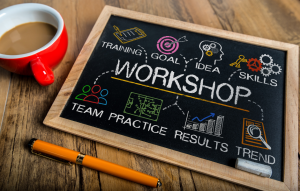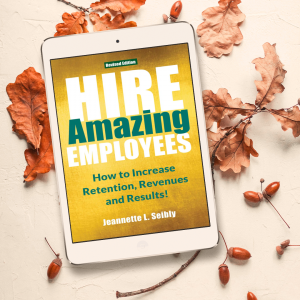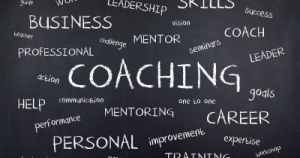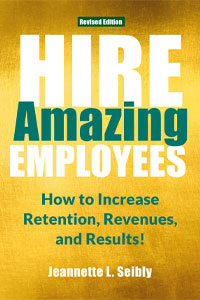
How often have you thought an issue was resolved only to have it come back and knock on your door again? It’s frustrating! If you let it, it can sabotage your resilience, resourcefulness, and results.
Issues reoccur when you put a band-aid on them. You were in a hurry to make the problems disappear and take the easy way out. The truth is (if you’re honest about it) you allowed your personal feelings to get in the way, didn’t talk it out with others, or listened to sage advice. But ignoring the real issue(s) never resolves the true problem.
It can be difficult to confront challenging issues. You may feel powerless or lack the confidence or insight to resolve the core issue. Too many times, you and others talk about it over and over, taking weeks and months in hopes of resolving the issue. But instead, you and the team gloss over the actual issue. In the meantime, the window of opportunity has closed, and the damage has been done irrevocably.
Decisions will be well-thought-out when a company addresses the fundamental issue head-on and facilitates the process. It gets resolved quickly, and the issue disappears. I’ve been part of situations where the problems disappeared, and to this day, the issue hasn’t resurfaced because it was effectively resolved. It required integrity to do the right thing (not take the easy way out), critical thinking (not circular thinking), making decisions, and taking action immediately.
Build Solutions That Disappear Issues
Align on Core Values. Be clear in your communications and management practices that all solutions must align with the company’s core values. For example, when addressing employee retention, the issue is rarely about money (even though many focus on it). It’s about factionalism, quiet retaliation, or other less talked about (and real) issues. One solution may be enforcing workplace policies and procedures (e.g., no-tolerance policies).
Make Good Decisions. The process of making good decisions doesn’t need to be complicated. Integrity, honesty, and critical thinking will always create better outcomes when having tough conversations and addressing tough issues as soon as possible. When making informed decisions, remember to analyze the risks, costs, and impact on others.
Communicate the Results Appropriately So No One Involved is Left Out. When writing an email or talking, be present with what you say! Or, you may make the situation worse! Also, when coming to an agreement on the goal and focused action steps to take, go around the table or virtual camera to get everyone’s input until nothing new is added. Yes, it’ll take more time. But in the long run will save countless hours and money and stop the issue(s) from resurfacing.
Think Win-Win-Win. While you do not have a crystal ball, doing the right things right will be reflected in your decisions. If you are upset or angry about the issue or have a vendetta against someone, recuse yourself immediately. Otherwise, the core issue will hang around for a long time and hurt your business growth and career.
Follow-Up and Follow-Through. This is the step that is usually skipped! Ask the team: “What are the true results? Are the solutions implemented and working? If not, what do we need to do to move forward?” It’s helpful to come back in a day, week, and month to ask yourself and your team, “Did we address the true issue? Did we resolve the problem? Are you hearing any feedback or gossip that we need to investigate?” Note: The old issue may be resolved, but a new one may have popped up. Remember, you’re never done handling issues as a leader and boss. Don’t wait! Address issues now.
©Jeannette Seibly 2023 All Rights Reserved
 Jeannette Seibly is a champion for success. As a leader, do you have bosses that are difficult for teams to work with? Jeannette’s depth of experience and wisdom can transform those bosses from hated to respected! Contact Jeannette for a confidential discussion.
Jeannette Seibly is a champion for success. As a leader, do you have bosses that are difficult for teams to work with? Jeannette’s depth of experience and wisdom can transform those bosses from hated to respected! Contact Jeannette for a confidential discussion.
A note from Jeannette about resolving issues: How often have you used the band-aid approach when resolving an issue, and have it returned to haunt you? When these issues resurface or hang around too long, they hurt your retention, revenues, and results. Get these issues resolved now. Do you need a facilitator to guide you through the conversations? Contact me!
 Are you ready to build your confidence and success as a boss? The coach is in! Every boss and leader has their blind spots! They get in the way of being a results-producer! When tough times occur, and they will, asking for the right help is essential! I have extensive experience and wisdom guiding bosses to hire, coach, and manage their teams. Along the way, they achieve unprecedented results. Contact me to learn more about my in-depth, one-on-one, customized coaching programs.
Are you ready to build your confidence and success as a boss? The coach is in! Every boss and leader has their blind spots! They get in the way of being a results-producer! When tough times occur, and they will, asking for the right help is essential! I have extensive experience and wisdom guiding bosses to hire, coach, and manage their teams. Along the way, they achieve unprecedented results. Contact me to learn more about my in-depth, one-on-one, customized coaching programs.


 Jeannette Seibly is a champion for bosses and teams delivering intended results. Does your company or department have a persistent problem? Jeannette’s depth of experience and wisdom guides clients to achieve intended dynamic results consistently!
Jeannette Seibly is a champion for bosses and teams delivering intended results. Does your company or department have a persistent problem? Jeannette’s depth of experience and wisdom guides clients to achieve intended dynamic results consistently!  The coach is in! Are you ready to build your confidence and success as a boss? A great boss works with an experienced executive coach as a sounding board. I have extensive experience and wisdom guiding bosses and leaders to hire, coach, and manage their teams. Along the way, they achieve unprecedented results.
The coach is in! Are you ready to build your confidence and success as a boss? A great boss works with an experienced executive coach as a sounding board. I have extensive experience and wisdom guiding bosses and leaders to hire, coach, and manage their teams. Along the way, they achieve unprecedented results. 
 How’s your leadership development progressing? Are you moving forward … or a tad stuck? Do you need a “nudge” and “clarification?” Want to accelerate and soar your results?
How’s your leadership development progressing? Are you moving forward … or a tad stuck? Do you need a “nudge” and “clarification?” Want to accelerate and soar your results? 
 Jeannette Seibly is The Leadership Results Coach. She has over 30 years of award-winning international experience as an executive consultant, speaker, and business author. Her clients surpass the norm by working through sticky situations and challenging relationships to become positive influencers.
Jeannette Seibly is The Leadership Results Coach. She has over 30 years of award-winning international experience as an executive consultant, speaker, and business author. Her clients surpass the norm by working through sticky situations and challenging relationships to become positive influencers.  This week’s PODCAST: Listen to Want to Achieve Great Results? Use Peer Coaching with my guest, Meredith Bell, on
This week’s PODCAST: Listen to Want to Achieve Great Results? Use Peer Coaching with my guest, Meredith Bell, on 
 This week’s PODCAST: Listen to How the pandemic led a professional copywriter, speaker and author to become an accidental artist with my guest, Debra Jason, on
This week’s PODCAST: Listen to How the pandemic led a professional copywriter, speaker and author to become an accidental artist with my guest, Debra Jason, on 



 Hiring the wrong person for an executive or critical position jeopardizes your company. However, this can be preventable when using a strategic selection system. Get essential hiring and selection tips by grabbing the Amazon International Best-Selling Book,
Hiring the wrong person for an executive or critical position jeopardizes your company. However, this can be preventable when using a strategic selection system. Get essential hiring and selection tips by grabbing the Amazon International Best-Selling Book, 
 Are you tired of hiring uncoachable employees? During the interview, ask: “When was the last time you made a mistake?” and “How did you handle it?” This is perhaps the most critical and revealing part of the interview. Get other tips and interview questions by grabbing,
Are you tired of hiring uncoachable employees? During the interview, ask: “When was the last time you made a mistake?” and “How did you handle it?” This is perhaps the most critical and revealing part of the interview. Get other tips and interview questions by grabbing, 